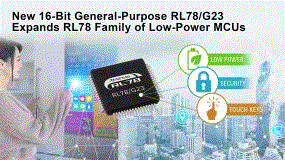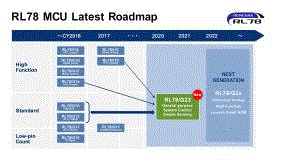Manufacturers
- Abracon
- Adam Tech
- Aerospace, Defense & Marine
- Agastat
- AIC
- AKM Semiconductor
- Alcoswitch
- Allegro
- Alps Electric
- Altera
- AMI Semiconductor
- AMP
- ams
- Analog Devices (ADI)
- Aptina Imaging
- Atmel
- Avago / Broadcom
- AVX
- Axicom
- Bccomponents
- Beyschlag
- BI Technologies
- Bourns Inc.
- Bowei Integrated Circuits
- Bridgelux
- Buchanan
- California Micro Devices
- Catalyst Semiconductor
- CGS
- Cirrus Logic
- Citizen Electronics
- CML Microcircuits
- Coiltronics
- Cooper Bussmann
- Corcom
- Core Logic
- Cree
- CSR PLC
- CTS
- Cypress Semiconductor
- Dale
- Data Image
- Deutsch
- Diodes Incorporated
- DOMINANT Opto Technologies
- E-T-A
- Eaton
- ECS
- Edison Opto
- Elcon
- EPCOS
- Epistar
- Epson
- Everlight Electronics
- Exar
- Fairchild Semiconductor
- FCI
- Freescale Semiconductor
- Fremont Micro Devices (FMD)
- Fujitsu Semiconductor
- Fulltech Electric
- General Semiconductor
- Harvatek
- Holsworthy
- Hsuan Mao Technology
- IDT
- Infineon Technologies
- Innolux
- International Rectifier (IR)
- Intersil
- IRC
- ISSI
- IXYS-IC
- Jing Cheng Electronical
- JL World
- Johanson Dielectrics
- Johanson Technology
- JRC / NJR
- JST
- KEC
- Kilovac
- Kingbright
- Kyocera Industrial Ceramics
- LEDiL
- Linear Technology / ADI
- Lite-On Technology
- Littelfuse
- Lumex
- Lumileds
- Luminary Micro
- Luminus Devices
- Macronix
- Maojwei / ZJPT
- Maxim Integrated
- MCC
- Mean Well Enterprises
- Microchip Technology
- Micron
- Microsemi
- Mini-Circuits
- Molex
- Murata Manufacturing
- Murata Power Solutions
- MWT
- National Semiconductor
- Nichicon
- Nippon Chemi-Con
- NJR / JRC
- NVE
- NXP Semiconductors
- OEG
- Omnivision
- ON Semiconductor
- Optek Technology
- Optrex
- OSRAM Opto Semiconductors
- OTAX
- Panasonic
- Peregrine(pSemi)
- Potter & Brumfield
- Power Integrations
- PowerStor
- Preci-Dip
- Prewell
- Products Unlimited
- Pulse Electronics
- PulseCore Semiconductor
- Qorvo
- Raychem
- Renesas Electronics
- RFMD
- Richtek Technology
- ROHM Semiconductor
- Rubycon
- Samsung Electro-Mechanics
- Samsung Semiconductor
- Schaffner
- Schrack
- Seiko Instruments, Inc. (SII)
- Semtech
- Sensata
- Seoul Semiconductor
- Sfernice
- Sharp Display
- Sharp Microelectronics
- Silicon Labs
- Siliconix
- Skyworks Solutions
- SoniCrest / JL World
- Spansion
- Sprague
- Stanley Electric
- STMicroelectronics
- Sunny Electronics
- Susumu (SSM)
- Taimag
- Taiyo Yuden
- TDK
- TDK-Lambda
- TE Connectivity
- Teccor
- Texas Instruments (TI)
- Thin Film
- Tianma Micro-electronics
- TOCOS
- TOKO
- Toshiba Electronic Components
- TT Electronics
- Tusonix
- TXC
- Tyntek
- Vishay
- Vishay Precision Group
- Vitramon
- Walsin Technology
- Weidmuller
- Welwyn
- Wickmann
- Winbond
- Xilinx
- Yageo
- Zetex Semiconductors
- ZJPT / Maojwei
新闻中心
Renesas Strengthens RL78 Family of Low-Power MCUs with 16-Bit General-Purpose RL78/G23
2021-04-13 | 返回 New RL78/G23 Optimized for IoT End Point Applications Expands Peripheral Functions and Security Functionality; Improves Power Consumption
New RL78/G23 Optimized for IoT End Point Applications Expands Peripheral Functions and Security Functionality; Improves Power ConsumptionTokyo, Japan ― Renesas Electronics Corporation, a premier supplier of advanced semiconductor solutions, today announced the launch and the beginning of mass production of its 16-bit general-purpose RL78/G23 microcontroller (MCU), further strengthening its RL78 Family of 8-bit and 16-bit MCUs for a broad range of applications. Compatible with Renesas' current general-purpose RL78 MCUs, such as the RL78/G13, the RL78/G23 increased the on-chip flash memory capacity to 768 KB and substantially expanded on-chip peripheral functions, which extend functionality while reducing the bill of materials (BOM) cost, while improving power consumption required by battery powered applications. With this feature combination, the new RL78/G23 is well suited for a wide range of applications that require both power and cost efficiency, including IoT endpoint devices such as home electronics, remote controls, and sensors.
 “It has been 10 years since we first introduced the RL78 Family, and as a leader of the extensive 16-bit MCU market, I am delighted that Renesas has continued its technology innovation drive as seen with the new RL78/G23, which delivers lower power consumption with a new process technology,” said Noriaki Nakanishi, Vice President of the MCU Device Solution Business Division at Renesas. “Moving forward, we will continue to expand the RL78 Family’s second-generation roadmap with easy to design and cost-efficient low-end MCUs to meet customers’ ever-evolving development needs.”
“It has been 10 years since we first introduced the RL78 Family, and as a leader of the extensive 16-bit MCU market, I am delighted that Renesas has continued its technology innovation drive as seen with the new RL78/G23, which delivers lower power consumption with a new process technology,” said Noriaki Nakanishi, Vice President of the MCU Device Solution Business Division at Renesas. “Moving forward, we will continue to expand the RL78 Family’s second-generation roadmap with easy to design and cost-efficient low-end MCUs to meet customers’ ever-evolving development needs.”By adopting a new process, the RL78/G23 realizes 44µA/MHz at CPU operation and 210nA during STOP (with 4KB of SRAM retention), an even lower power consumption compared to current RL78 MCUs. In addition, the newly implemented SNOOZE mode sequencer (SMS) makes it unnecessary to activate the CPU while any peripheral operations are operating in snooze mode, dramatically reducing power consumption for applications that utilize intermittent operation. Furthermore, the logic and event link controller (ELCL) adds logic functionality to the capabilities of a conventional event link controller (ELC) (Note 1). This makes it possible to create conditional links to multiple events while continuing to benefit from the reduced power consumption realized by the ELC.
The RL78/G23 features a Renesas-exclusive capacitive touch sensor unit that combines superior high-sensitivity and low-noise characteristics and can be used to implement a contactless gesture-based user interface (UI). The MCU also incorporates enhanced security functions that make it possible to develop truly secure systems. These include a true random number generator (TRNG) essential for certificate encryption as well as a device-specific unique ID and a customer ID that can be specified by the user. Renesas also provides the RL78/G14 evaluation board, which is already qualified to work with FreeRTOS on Amazon Web Services (AWS) and is listed in the AWS Partner Device Catalog. The RL78/G23 evaluation board is also scheduled to receive FreeRTOS qualification.
Key features of the RL78/G23
> RL78 CPU core running at 32 MHz
> Support for operating voltages ranging from 1.6 V to 5.5 V
> Max. 768 KB of code flash memory, 8 KB of data flash memory, max. 48 KB of SRAM, to support software updates, etc.
> On-chip capacitive touch sensor unit that can be used to implement a high-sensitivity contactless UI
> High-precision (±1.0%), high-speed on-chip oscillator
> Analog functions such as 12-bit A/D converter, 8-bit D/A converter, and temperature sensor, etc.
> Remote control signal reception function, enabling one-chip implementation of a remote control receiver
> Output current control (15 mA) port for LED drive and 40 mA output port
> Package lineup with pin counts from 30 to 128 pins
The RL78/G23 will be combined with Renesas’ complementary analog and power offerings to create comprehensive solutions for a variety of applications. These “Winning Combinations” showcase the breadth and depth of Renesas’ product line-up with more than 200 solutions already available, including numerous RL78 MCUs. Currently available applications featuring the RL78 MCUs include Critical Power Monitoring Care for monitoring home health, Body Temperature Measurement in Access Control Systems that allows body temperature measurement from a distance such as from shop entrances, and the Bathroom Odor Detector.
RL78 Family Development Environment
An evaluation board (the Fast Prototyping Board) is now available for the RL78/G23 that features all-pin access as well as Arduino UNO and Grove interfaces. Simply connect a USB cable to enable program writing and debugging, enabling developers to start evaluation of the RL78/G23 without the need for additional tools. In addition, there is a rich development environment available for the RL78/G23 that includes, in addition to previously available development tools for the RL78 Family, Smart Configurator, which simplifies SMS and ELCL design and supports peripheral function driver code generation via a GUI, a QE tool solution for touch panel tuning, and the Arduino development environment (IDE).
Pricing and Availability
The RL78/G23 is available now with a reference price of US$1.16 per unit in 1,000-unit quantities for the 64-pin LFQFP package, 128 KB of on-chip memory configuration. For more information on the RL78/G23, visit: https://www.renesas.com/rl78g23.
The reference price for the Fast Prototyping Board is US$21.00 per unit.
For more information on the evaluation kit, visit: https://www.renesas.com/rl78g23-64p_fpb.
Note 1: An event link controller (ELC) provides functionality that allows events to be directly linked to peripheral functions, bypassing the CPU. This enables events to rapidly activate modules directly, without going through the controller. It also contributes to reduced power consumption because events can activate modules even when the CPU is in sleep mode.
Source: http://am.renesas.com/





